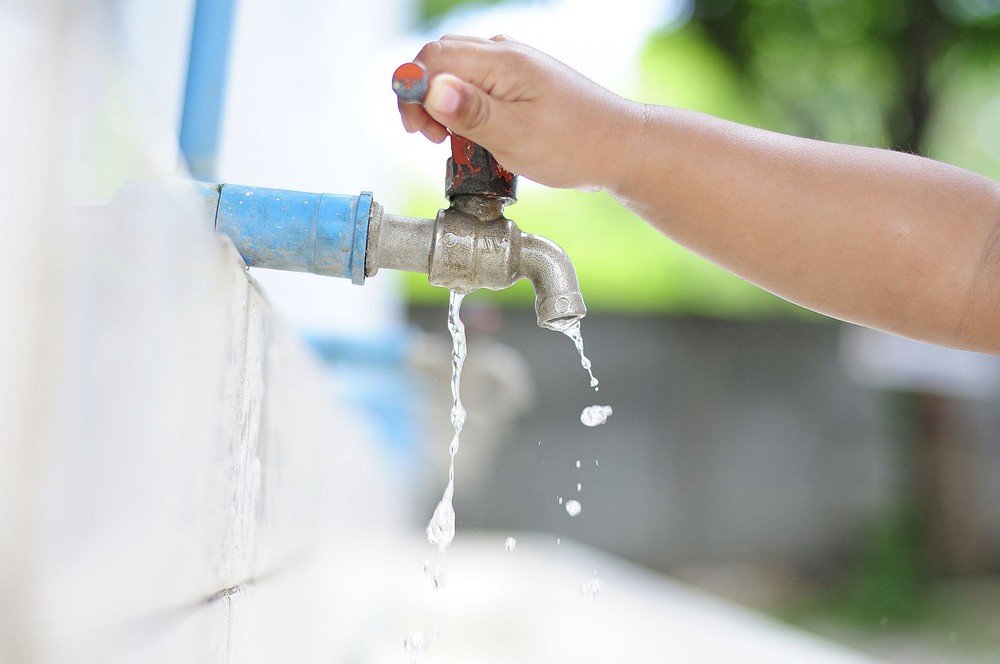Notably, the situation of "shadowy competition" has made it difficult for the clean water market to develop, creating risks of "policy profiteering" groups competing unethically.

The Ministry of Finance Adjusts the Clean Water Pricing Framework
Vietnam has not yet effectively ensured citizens' right to access clean water, as the national rate of households with access to clean water stands at only 52.2%.
Missed Goal
The importance of clean water for health and daily life is undeniable. Therefore, the United Nations and many countries regard access to clean water as a basic right, with the state obligated to ensure that citizens can exercise this right. It is important to note that clean water refers to treated water that meets health standards – essentially, tap water.
Vietnam has set the goal of providing clean water to 95-100% of urban residents and 93-95% of rural residents by 2025. However, it is likely that Vietnam will "miss" this target.
According to the 2019 Population and Housing Census report by the General Statistics Office, the percentage of households with access to tap water is only 52%. In particular, rural areas have a rate of just around 35%, a significant gap compared to urban areas, where the rate is more than 84%.
The question arises: why, in a country with abundant water resources and a wide network of rivers and lakes, is the percentage of people using tap water so low? The primary cause lies in the organization and operation of the clean water market. Tap water is a "commodity" – a special public commodity. The market needs specific principles; clear regulations for each step from production, distribution, to retail; and the involvement of private entities. However, currently, in many areas, the design and operation of the market are chaotic, failing to protect the interests of both private investors and consumers.
Hanoi is a prime example. Due to a series of instabilities in the clean water market, the capital city, surrounded by a dense network of rivers, has only about 35% of suburban residents with access to tap water.
Market Structure Is Unreasonable
First, while the state lacks investment resources, the socialization of public clean water services is not accompanied by a reasonable market structure. Vietnam allows private participation in the market but has not clearly delineated the roles of public and private entities, creating numerous conflicts and discouraging businesses from investing.
For example, the regulations allow private companies to produce and supply clean water, but for the water to reach households, pipelines are needed. In areas without an existing pipeline system, mostly rural areas, people must pay for the construction of pipelines to the water supply company. The question here is: what is the role of the state and private companies in providing water services in these areas? What additional rights do citizens have when they contribute to the construction of pipelines, considering that the state should guarantee their access rights?
Given this situation, should the private sector only be allowed to participate in the "water supply" stage, while distribution and retail remain under state monopoly? If distribution is the responsibility of the state, in the context of budget shortages, what kind of public-private partnership (PPP) mechanism should be implemented to attract private investment in pipelines?
Previously, due to the sensitivity of clean water as a commodity, many members of the National Assembly in 2019 proposed that this should be a conditional business sector.
This proposal was made in the context of foreign investors purchasing shares in private water supply companies and the oil contamination incident at the Song Da Clean Water Company. This proposal was reiterated by related associations in 2020, but it remains unresolved. Currently, only Decree 117 directly regulates the management, supply, and exploitation of water resources.
Secondly, there is the issue of pricing. In the 63 provinces, there are 63 different clean water price charts. The price of clean water is regulated by the Ministry of Finance, which sets the price framework, calculation methods, and profit margins. Provinces base their decisions on local conditions, but they cannot exceed the Ministry's price framework. Clean water companies set the selling price but must adhere to the provincial price chart. Most provinces set average prices that ensure production costs are covered and a minimum profit margin of 5%.
In reality, some provinces set water prices below production costs. However, the issue lies in the fact that clean water prices differ across provinces due to varying costs of materials, labor, general production costs, and business management.
A survey by IPS revealed that many businesses in the industry believe the retail price of water, especially for domestic use, is low. In many provinces, this price has not been adjusted. For example, in Hanoi, the price has remained unchanged for nearly 10 years.
Nguyen Quang Dong - Institute for Policy Studies and Media Development.
According to Business Forum Magazine




.jpg)
